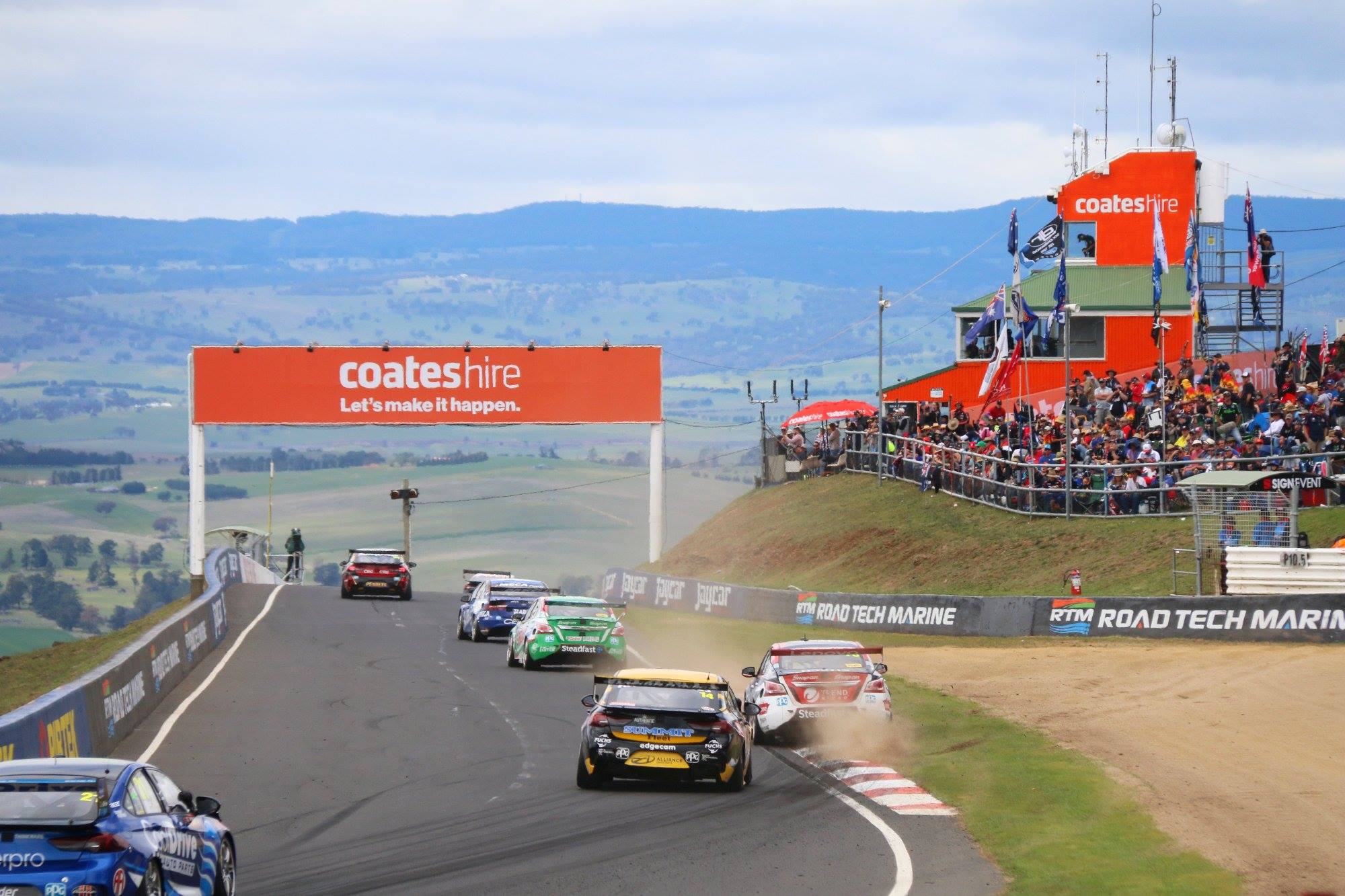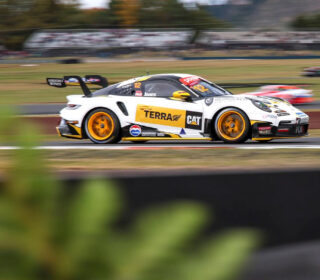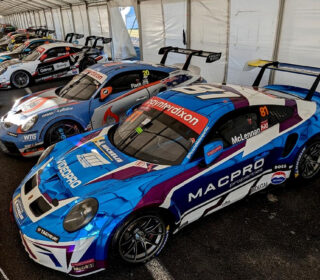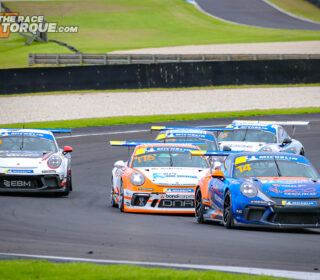The new ratings game

TEN years ago you wouldn’t have considered for a second the way Facebook, Twitter and Instagram shape the way fans now follow their favourite sport.
Social media has evolved to become the leading way fans to interact, both with each other and with the sport and participants themselves.
And while it may not be pretty a lot of the time, it’s impossible to disregard how important it now is to the way a sports presents itself.
Supercars, in particular, is well positioned for the future thanks to not only a sizable online fan base, but as it turns out a remarkably engaged one, too.
And there’s a very good chance that the interactivity the sport enjoys will have a future bearing on forthcoming media rights for the championship moving forward.
For starters, however, it’s worth looking at the fact that social media can even be quantified.
Companies, like TV ratings provider Nielson, have been analysing and collating viewing audiences of traditional and broadcast television for years. They are responsible for the numbers you see each Monday when the top-20 list of who watched what is released to the public. Quite often they are the numbers on which networks make decisions about what shows stay and what get axed when the numbers don’t shape up.
More recently, Nielson have also begun collating information regarding the level of interactivity on digital media that TV shows enjoy while being aired.
The company collates interactions linked to an ‘owned account’ – a digital channel owned and operated by a media outlet, TV network, sporting franchise or similar – from Facebook, Twitter and Instagram.
Relevant to this discussion, that would be the #VASC hashtag and the accounts linked to Supercars, Fox Sports and Channel 10.
It then translates those interactions into a number which, like TV ratings, can be ranked in comparison to other shows throughout any given day, week, month or year to give an idea about who is talking about what online.
From a motorsport point of view, there are two key insights to be gained from a quick study of results published throughout this year so far, namely that a) sport dominates the conversation and b) Supercars does very well indeed, relative to other sports that may gain a larger TV audience.
For instance, the New Zealand round of the championship last weekend ranked second and third on the social interaction charts; drawing 95,400 interactions on Sunday and 78,000 on Saturday for a total of 173,400 across two days.
The Pukekohe races were only beaten, understandably, by the return of the Australian Cricket Team to competition: The One Day match against South Africa creating 166,400 interactions on Sunday. Most of them probably at about the time the Aussie’s found themselves 3/8..
For context, the finale of Channel Nine’s reality show The Block created 117,400 interactions a week earlier. The Bachelor finale’ in October drew 142,500 interactions and was well beaten by the Supercheap Auto Bathurst 1000 the same weekend – Bathurst week building to more than 313,000 interactions across the race for a total of more than half a million between Thursday and Sunday.
In fact, a majority of Supercars rounds this year have ranked in the top five on Nielson’s Social Interactions Charts.
The Gold Coast 600 filled three of the top five spots (including No. 1), while even the Winton and Perth SuperSprint events ranked in the top five on their weekends – despite being in the depths of AFL and NRL early-season mania.
Here’s some more numbers at random: 2017-18 Big Bash League Grand Final between the Adelaide Strikers and Hobart Hurricanes drew 351,000 interactions. The Opening Ceremony of the Winter Olympics 136,000 and Game Two of the State of Origin Rugby League contest – one of the most watched TV events of the year outside of footy finals – 310,000.
Perhaps most tellingly, last year’s climactic Newcastle 500 finale’ drew 289,000 digital media interactions, beating all four days of the first Ashes test against England last November.
Bigger numbers (in the millions) were seen this year by the AFL and NRL Grand Finals, naturally, proving the domination of the footy codes in all areas of the sporting landscape.
Still, the numbers just all add to the argument that Supercars – and motor sport in general – stack up very well in this new ratings battle.
So what does it mean? Well, it does pour some water on the theory that less people follow or interact with a sport if it is only shown on subscription TV. Fox Sports, in particular, will be undoubtedly thrilled by these numbers as it proves the dedicated, committed fans are using their platform to watch the sport they paid good money for.
These numbers also adds emphasis to the level of engagement in the sport that others would crave to have.
Supercars may not have the massive TV numbers that the AFL or NRL attract, but as time evolves and audiences take in their sport in different ways, discussions surrounding media rights is likely to be as much about ‘engagement’ as it is the total audience.
If you are an advertiser on the broadcast or a sponsor of a team, the higher the percentage of ‘engaged’ people actively watching may be a better bet than a sexier overall number – but one with less people actually caring about what is going on.
You’ll remember above we mentioned that Game two of State of Origin drew 310,000 interactions on social media.
2.353 Million People watched that match on Channel Nine that June evening – meaning as a percentage of the total audience, social interactions accounted for about ten per cent.
Meanwhile, just under 500,000 watched the 2017 Supercars finale’ on FOX Sports and Channel 10 (competing with the Ashes on Nine) yet it generated 289,000 social media interactions. That’s more than 50% of the audience engaged on social media.
Now those figures make an assumption that each of the audience watching on TV are only interacting once on social media – where in reality it is more likely that it’s a smaller amount of the total audience are producing a bulk of the content.
You only have to look at my twitter feed during a particularly controversial race to see multiple #VASC tags appearing next to tweets from yours truly in a short space of time.
Yet it is impossible to argue that the percentage of engaged fans, in those two scenarios and watching two contests that went for about the same time, swings heavily in the favor of the Supercars biff ‘n bash and not the one on the grass field.
What’s more, the days of Broadcast and subscription TV enjoying a monopoly on media rights are coming to an end; digital companies like Facebook, Twitter, Google, Telstra and Optus are snatching up sports TV rights. They, perhaps more than anyone, understand that a level of engagement is critical to not only building and sustaining an audience, but cashing in on it as well in the form of new subscribers, customers or just purchasers of any given product.
So while it may not change the next Media Rights deal, which is up for grabs in a few years, Supercars’ digital footprint and an engaged, interactive fan base unafraid to communicate their passions for the sport online, looks ripe for the picking for a future broadcaster – traditional or not – to grab with both hands and make their own.
As TV ratings across the board, sport or otherwise, slip in favour of other ways to consume it the relative digital strengths of each sport will likely be vital in the future ‘broadcast’ arrangements.
It could change the way the sport is covered completely.
Sources: Mediaweek, Nielson, TV Tonight.
WORDS: RICHARD CRAILL
IMAGE: MARK WALKER














